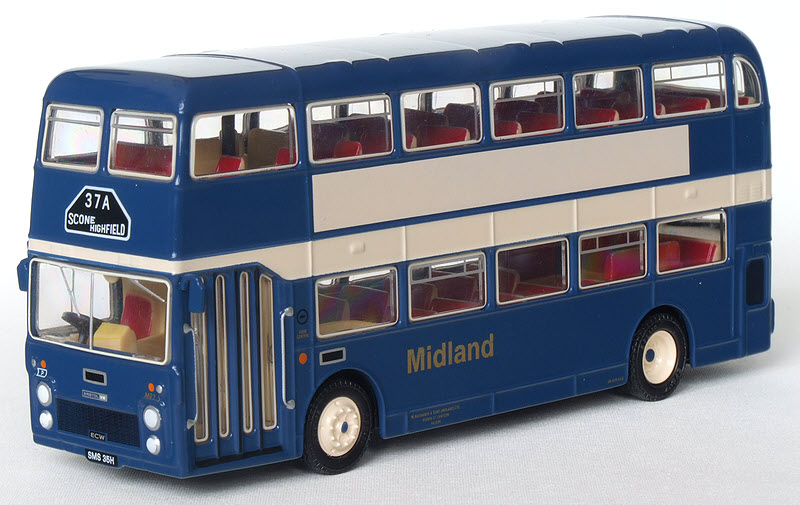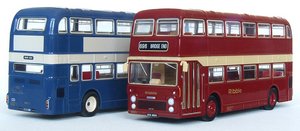
It's been sometime since EFE released a totally new double deck bus tooling, the last was the London RLH over five years ago. The new flat screen ECW bodied Bristol VRT appears to be a cross between a series I and series II vehicle with a one piece rear engine cover which lacks the wider flanges at the top.
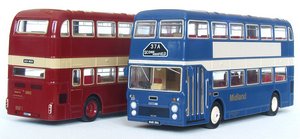 In something of a departure for EFE they have chosen to produce the main body as a single piece casting, all the previous EFE double deck models have had separate upper & lower deck castings. The previous VRT models also had separate engine housings and front grille panels to allow the main body casting to be used for both series II & III models.
In something of a departure for EFE they have chosen to produce the main body as a single piece casting, all the previous EFE double deck models have had separate upper & lower deck castings. The previous VRT models also had separate engine housings and front grille panels to allow the main body casting to be used for both series II & III models.
Despite having the single piece body the model's construction uses EFE's now traditional internal pole method, however compared with the earlier series II & III versions of the model these have been fairly successfully hidden behind the window pillars and internal fittings. The diecast body also seems much thinner than the previous models and the model has a less chunky feel about it.
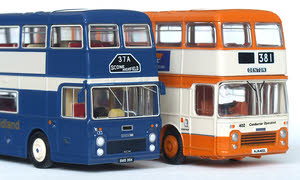 On first examination the model looks very similar to the existing Series 2 EFE casting in terms of the panel detailing and rear engine compartment. The new tooling has slightly more beading detail then the earlier EFE VRT models, although this is only evident on the panels immediately above the lower deck side windows.
On first examination the model looks very similar to the existing Series 2 EFE casting in terms of the panel detailing and rear engine compartment. The new tooling has slightly more beading detail then the earlier EFE VRT models, although this is only evident on the panels immediately above the lower deck side windows.
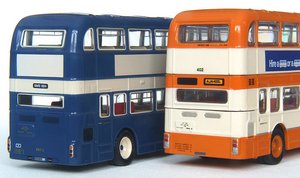 Like the other versions there is only limited beading on the side between deck panels and the area below the lower deck side windows, the roof treatment also stays true to the original versions whereby only the fore & rear most beading strips are reproduced, the other panel joints appearing more like an overlap than beaded joint. The six small roof vents along the sides of the roof have also been made less prominent on this new version.
Like the other versions there is only limited beading on the side between deck panels and the area below the lower deck side windows, the roof treatment also stays true to the original versions whereby only the fore & rear most beading strips are reproduced, the other panel joints appearing more like an overlap than beaded joint. The six small roof vents along the sides of the roof have also been made less prominent on this new version.
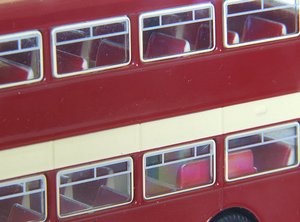
The glazing on the new model has been improved and now appears much more flush with the exterior of the of the casting. The window vents were moulded into the glazing on the earlier models but this hasn't been repeated, all the panes are now flat, and have the window vents tampo printed on the outside in silver. This change will no doubt make it easier to represent different window arrangements.
An attempt has been made to reproduce the cream window rubber beading used on the early VRTs, although a nice touch some might feel it perhaps over emphasizes this feature somewhat.
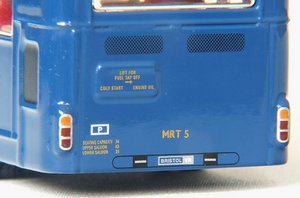
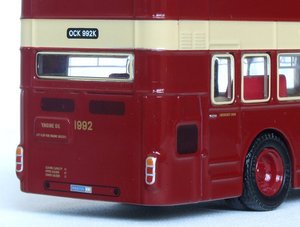 Taking a more detailed look at the rear, the engine cover is a single panel rather than the two piece version found on the earlier models, the vents in the panel are no longer recessed but are instead tampo printed decals. The emergency engine access panel is still a raised feature but the rear light clusters are now of the earlier smaller style.
Taking a more detailed look at the rear, the engine cover is a single panel rather than the two piece version found on the earlier models, the vents in the panel are no longer recessed but are instead tampo printed decals. The emergency engine access panel is still a raised feature but the rear light clusters are now of the earlier smaller style.
The engine side covers have the beading moulded into them and use tampo printing to reproduce the fine mesh of the large cooling grilles

